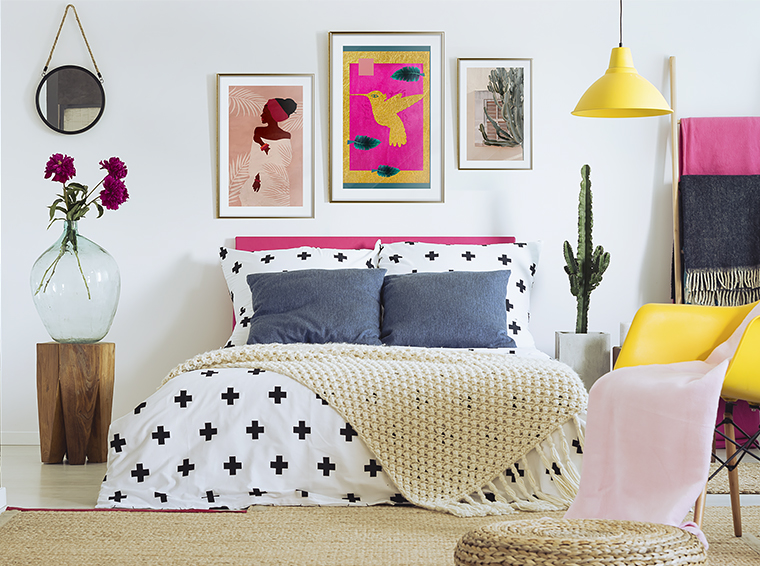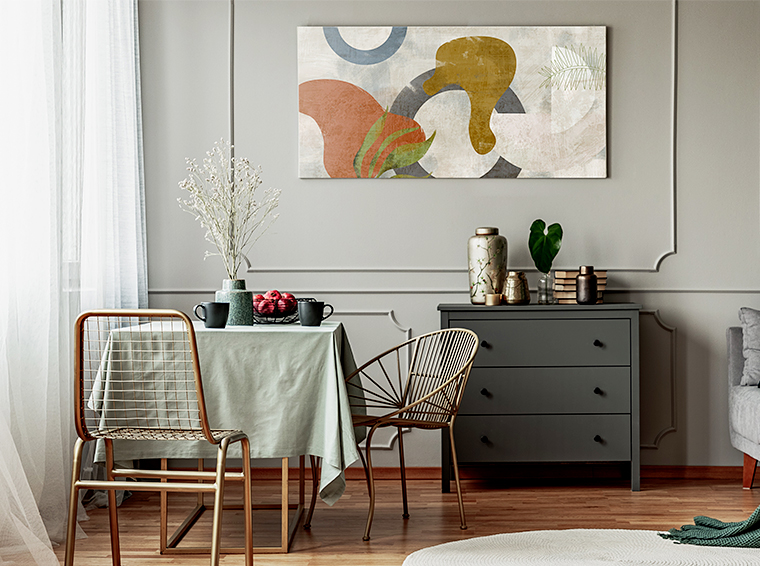Traditional Japanese Zen philosophy inspires us with the simple and natural essence of minimalist architecture and design. Line, form, space, light and material are the basic, and in the Japanese aesthetics, the only elements of the decor. An elimination of unnecessary internal walls is essential here in order to open up the space and allow an organic flow between the inside and outside the structure. It is believed that this practice reduces all elements to their basic, necessary quality. Japanese architects such as Tadao Ando have translated this concept through the use of materials, geometry and nature to create a unique relationship between the natural environment, the building and, most importantly, its interior. In the following text, we will look at ideas that remain faithful to the essence of this uncompromising minimalism in Japanese interiors.

Japanese decor in an apartment
The basis of the arrangement of Japanese interiors are references to the already mentioned Buddhist Zen philosophy. Hence, the simplicity, harmony and love of nature - features characteristic of traditional Japanese houses. Buddhism is also the cornerstone of space management - a skill that the Japanese have mastered to perfection. In their opinion, the appropriate arrangement of space and household appliances determines the proper flow of air, light and energy. According to the principles of Feng Shui, energy directly affects human life - also outside the home. The Japanese have to use space sparingly also due to the specific buildings and the density of buildings typical of Japanese cities.
Japanese style - interiors from the country of the blooming cherry trees
There is no place for randomness in Japanese culture. The Japanese style of the interior requires all its elements to merge and create a coherent whole. The same principle applies to Japanese interior design, which reflects a minimalist, harmonious character and is characterized by exceptional symmetry, coherence and balance. Authentic Japanese aesthetics are believed to derive from the simplicity that distinguished reading and meditation rooms furnished by Buddhist monks. Their ascetic modesty has become a source of inspiration for the traditional Japanese home that we know from historical sources. Although the apartments of modern Japanese people are influenced by global trends, old traditions still inspire Westerners fascinated by Japanese culture.

Japanese style at home
One of the basic concepts of the Japanese style in interior design is the flow of light twhich is achieved, among others, through the characteristic sliding doors. This traditional device called fusuma doors are made of wood and thin, translucent washi paper. Its surface sometimes has subtle paintings that were an additional decoration of the interior. However, the main function of these doors was to separate parts of the interior, the purpose of which could change depending on the time of day and needs of people living in there. It was especially important in small apartments, where rooms often fulfilled several functions simultaneously. Nowadays, Japanese paper is often replaced with practical glass panels.
The modesty and naturalness of Japanese interiors is also expressed in colours. Most Japanese houses are dominated by natural colours in shades of brown. The monochrome design is sometimes broken by stronger accents of fiery colours - red, yellow or orange. Contrasts can also appear in modest arrangements - these are most often combinations of black and white or red. However, all elements must remain coherent, balanced and symmetrical.
The Japanese keep the amount of furniture and household appliances to a minimum. Their height is also minimal - typical Japanese furniture is set low above the floor, the best example of which are the characteristic benches where traditional tea ceremonies are held. Instead of beds in Japanese houses, you can find wool or cotton futon mattresses, which are folded during the day so that they do not take up the usable space. However, if you cannot imagine an apartment without a comfortable bed and a large table, and at the same time would like to maintain the Asian atmosphere in your interior, choose natural materials such as wood or bamboo, simple forms and subdued colours. Add a low coffee table, low shelves and a chest of drawers to classic furniture. Japanese-style wall ornaments or Zen canvas prints are a perfect example of a shift from the need for consistency with the whole interior. One timeless painting theme, e.g. The Great Wave in Kanagawa will perfectly complement the room and fit into the concept of the lower style.

Home sweet home - that is, if your place is nice and cozy. The Japanese do it perfectly well - they are world champions in creating a homely and regenerative atmosphere. The calming effect of wooden furniture and the successful combination of functional design and comfort make more and more designers in Europe include the basics of this style in their projects. We have presented some interesting ideas for the Japanese style of design and we hope that we have also left inspiration for you to use them in arranging your own space.







